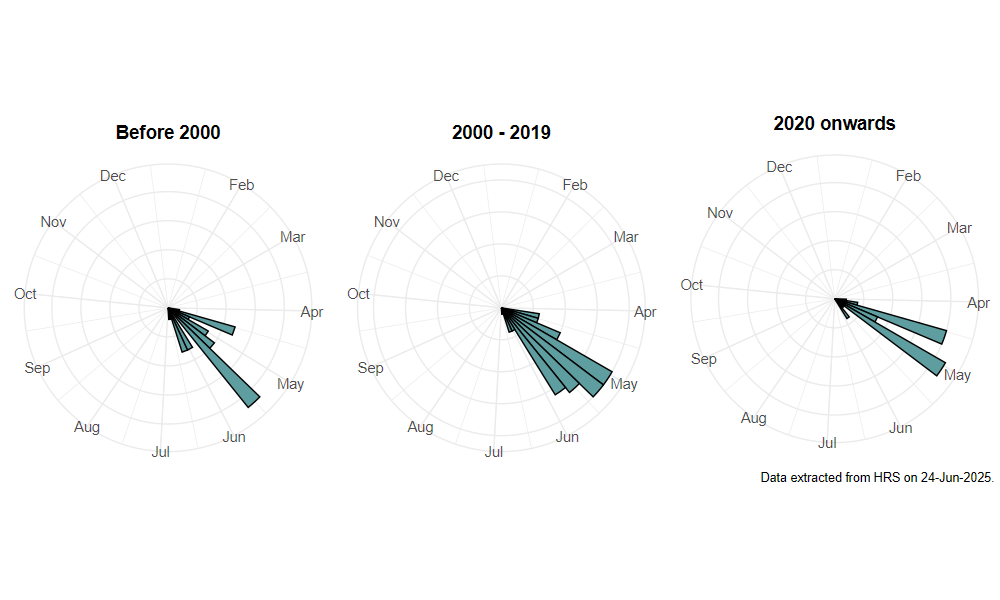Chalcosyrphus eunotus (Loew, 1873)
Identification
Identification difficulty = 3. ![]()
![]() according to Ball & Morris, 20241
according to Ball & Morris, 20241
Synonymy
Brachypalpus eunotus Loew, 1873 in Coe(1953)2 and Kloet & Hincks (1976)3.
Biology
This is a woodland species that is most frequently encountered in deep, steep-sided dingle woodlands from Gloucestershire to Shropshire where it is associated with fallen timber in log-jams in streams. The larvae develop under the bark of partially submerged timber.
Flight period
The following plots show the number of unique records per week excluding those reported to be of immature stages.

Status
Lower Risk (Nationally scarce) - Ball & Morris, 20144. Vulnerable (RDB2) - Falk, 19915 and Shirt, 19876.
Distribution
This species is mainly confined to the West Midlands/Welsh borders region and to a small number of localities in Dorset, Somerset and Staffordshire. In the past ten years there have been numerous records from the Welsh Marches.

Trends
The following plots show the Frescalo TFactor vs year and a map of the rescaled frequency (all records) for the species.
-
Ball, S., & Morris, R. (2024). Hoverflies of Britain and Ireland. WILDGuides (3rd ed.). Oxford: Princeton University Press. ↩
-
Coe, R. (1953). Diptera: Syrphidae. Handbooks for the Identification of British Insects, 10(1), 1–98. ↩
-
Kloet, G., & Hinks, W. (1976). A check list of British insects. 2nd Ed. Part 5: Diptera and Siphonaptera. Handbooks for the Identification of British Insects, 11, 1–139. ↩
-
Ball, S., & Morris, R. (2014). A review of the scarce and threatened flies of Great Britain. Part 6: Syrphidae. ( No. 9). Species status (pp. 1–130). Peterborough: JNCC. ↩
-
Falk, S. (1991). A review of the scarce and threatened flies of Great Britain. ( No. 39). Research and Survey in Nature Conservation (pp. 1–194). Peterborough: NCC. ↩
-
Shirt, D. (Ed.). (1987). Red Data Books: 2. Insects. Peterborough: NCC. ↩